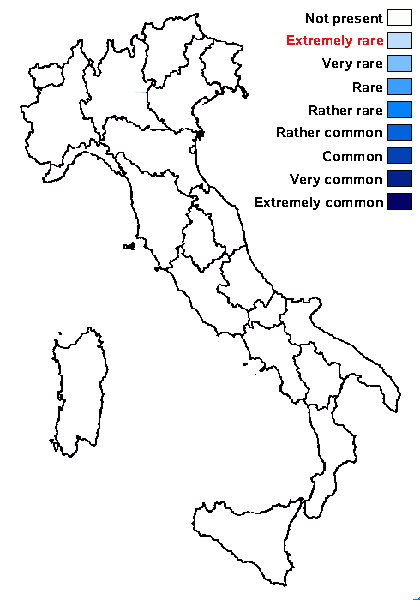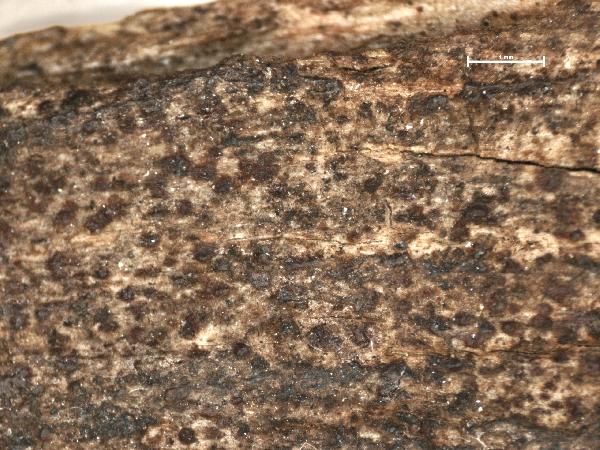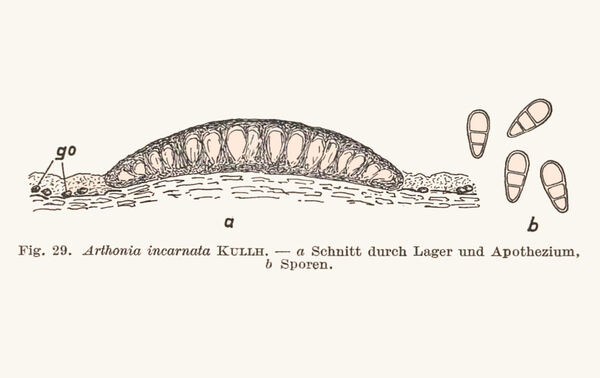Arthonia incarnata Kullh. ex Almq.
K. Svenska Vetensk-Akad. Handl., n. f. 17, 6: 18, 1880
Synonyms:
Distribution:
Description: Thallus crustose, endosubstratic, inapparent or visible as a whitish to pale olive-grey discolouration of bark, with or without a thin, dark prothalline line. Apothecia arthonioid, irregularly rounded to short-elliptical, adnate, slightly to strongly convex, pale brown-red to brownish orange, epruinose, 0.2-1.2 mm across 90-160 μm thick, without a proper margin. Proper exciple not developed; epithecium faintly orange-brown, 5-10 μm high, K-; hymenium colourless to pale orange brown, weakly inspersed with oil-droplets, 45-75 μm high, hemiamyloid; paraphysoids richly branched and anastomosing, 2-3 μm thick, embedded in a dense gelatinous matrix, the apical cells thinner, c. 1 wide; hypothecium colourless to pale orange-brown, 20-65 μm high. Asci 8-spored, clavate, distinctly stipitate, semi-fissitunicate, with a large apical dome and an elongated ring-structure in tholus, Arthonia-type, (20-)26-40(-50) x (9-)11-15(-18) µm. Ascospores (1-)2(-3)-septate, constricted at least at primary septum, persistently hyaline, sole-shaped with a distinctly enlarged upper cell, (9-)11-15(-18) x (3-)4.5–6(-7) μm, without epispore. Photobiont trentepohlioid. Spot tests: thallus K-, C-, KC-, P-, UV-. Chemistry: without lichen substances.Note: a widespread, but very rare specie of acid to subneutral bark, confined to forests with a long ecological continuity, known from several localities in Northern and Central Europe. To be looked for in Italy.
Growth form: Crustose
Substrata: bark
Photobiont: Trentepohlia
Reproductive strategy: mainly sexual
Most common in areas with a humid-warm climate (e.g. most of Tyrrenian Italy)

Predictive model

United States National Herbarium - Smithsonian (US:Lichens) - Collector: H. Willey Number: s.n. Date: 1874-00-00 Verbatim Date: 1874 Locality: United States, New Hampshire, Dixville. - CC BY-NC 3.0 - Source: Consortium of Lichen Herbaria (2023) http//:lichenportal.org/portal/index.php. Accessed on December 14.
Growth form: Crustose
Substrata: bark
Photobiont: Trentepohlia
Reproductive strategy: mainly sexual
Most common in areas with a humid-warm climate (e.g. most of Tyrrenian Italy)

Predictive model



